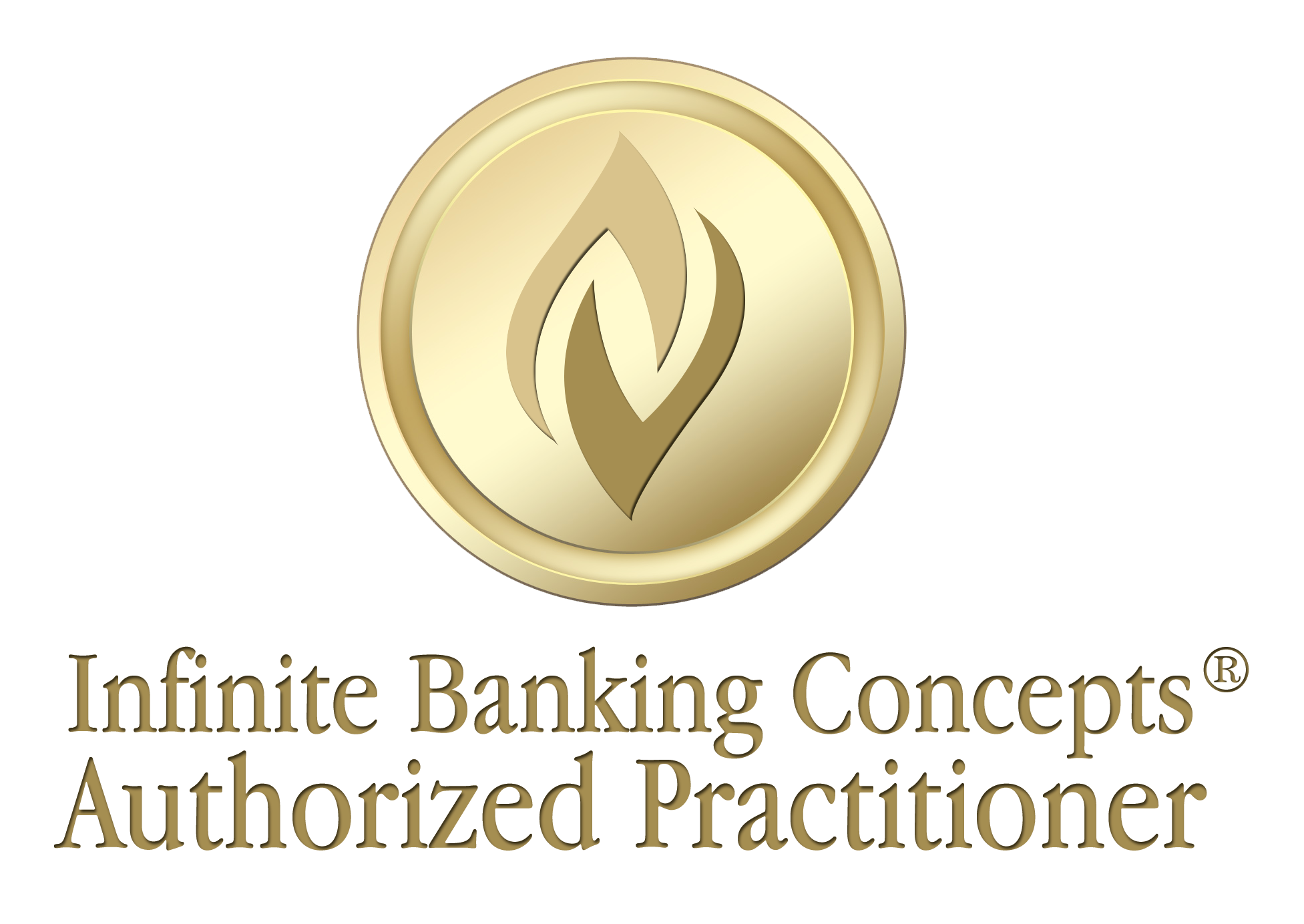
A Real Estate Investor’s Dilemma
A client of mine once called me in a rush. He had just found a promising multifamily property and needed $100,000 to close quickly. Like most investors, he had the cash sitting in a high-yield savings account. It was liquid, accessible, and – at least on paper – earning a decent return.
But when he pulled the money out, something important stopped happening. That capital was no longer compounding. It was gone from the account, sidelined from growth the moment he put it to work in the property.
That’s the reality for most investors. Money doesn’t sit idle for long, but it always has to sit somewhere first. And where it sits can make the difference between growth that compounds quietly in the background and growth that vanishes the moment you deploy capital.
This is where the whole conversation changes. Because there’s a place investors can run their money through first – a place that keeps dollars compounding even while those dollars are out working in the world. It’s not a bank. It’s not a high-yield savings account. It’s not even Wall Street. It’s a properly designed whole life insurance contract.
The Parking Lot Problem
Most investors treat savings accounts like parking lots. Money comes in, sits for a while, and leaves when it’s time to fund a deal. The problem with parking lots is obvious: nothing grows there.
High-yield accounts try to make the waiting game feel less painful. Five percent here, six percent there – it looks attractive, until the bank quietly changes the rate. What was once six drops to three, then two and a half. Add taxes and fees, and suddenly those promised returns look a lot less compelling.
And parking money in certificates of deposit? That ties your hands for months or years. Penalties hit if you need the cash early, which is the opposite of flexibility for entrepreneurs and investors who thrive on agility.
“High-yield savings accounts can change their rates whenever they want to. And they do.”
Running It Through First
Here’s the shift: instead of parking money in a bank account, you run it through a whole life insurance contract first.
Inside these contracts, cash value grows at a guaranteed rate – around four percent – and that growth is net of taxes. When structured correctly, you can also layer in dividends over time, pushing long-term compounding into the eight, nine, even ten percent range. All tax-advantaged. All while remaining liquid.
And liquidity matters. When my client needed $100,000, the savings account gave him immediate access. But had he run it through a whole life contract, he could have borrowed against the cash value instead. That’s a critical difference. Borrowing keeps the original $100,000 in the contract, still compounding at its guaranteed rate, while the borrowed funds are out funding the property.
This is the AND factor. You can have your money compounding AND have it funding your deals at the same time.
“When you borrow against the policy, your money is still in there doing its thing.”
Becoming Your Own Banker
The best investors understand that control is the real prize. With whole life contracts, you’re no longer at the mercy of bank policies, changing rates, or invasive financial disclosures.
When you borrow against your policy, you’re borrowing from the insurance company’s general fund, collateralized by your own cash value. You set the repayment terms. In fact, you don’t have to repay at all. But the system works best when you do – because every repayment restocks the shelves of your personal bank.
I coach clients to think of it this way: every time you replenish, you’re rebuilding your reserves for the next opportunity. A new property, a crypto play, equipment upgrades, even covering maintenance on existing real estate. The policy becomes a revolving source of capital that never stops compounding in the background.
“The whole thing works best if you treat it like you’re the bank now.”
Privacy and Protection
There’s another angle most people miss: privacy. Bank accounts are visible. If you’re applying for student loans, financial aid offices can see balances sitting in savings. Lenders can assess your liquidity. Those numbers can be used against you.
Cash value in a whole life contract doesn’t appear on those screens. It’s private. With very few exceptions – such as bankruptcy – it doesn’t have to be disclosed.
And then there’s the built-in protection: the death benefit. As long as the policy is in force, your beneficiaries receive a significant payout, tax-free. Banks don’t offer that. Nor do they bundle in long-term care benefits that can unlock half the death benefit if you need medical support later in life.
Whole life isn’t just a financial tool. It’s a financial system – growth, liquidity, privacy, protection, and optionality all in one.
The Long Game
Investors often push back on one point: doesn’t it take years for these contracts to build meaningful value? That’s the conventional wisdom, but it’s based on old designs.
Today, when structured properly, policies can take in three to seven times the base premium up front, creating liquidity right away. Within weeks of funding, up to 95% of that cash value is available for loans. That’s not a slow burn. That’s an immediate foundation you can build on.
Over the long haul, these contracts only get stronger. Ten, fifteen, twenty years in, dividends and compounding snowball into returns that rival – or beat – many traditional investments. The difference is predictability. Markets can collapse. Banks can cut rates. Contracts keep compounding.
From Either/Or to AND
The biggest mental hurdle for most investors is reframing the role of whole life. It’s not an alternative to real estate, crypto, hard money lending, or business expansion. It’s the foundation that enables all of those.
You don’t have to choose. You can have your whole life contract and your real estate portfolio. Your contract and your venture bets. Your contract and your lending business.
That’s why I call it the AND asset.
“Think of it as a place to park your money first: safe, liquid, growing, and foundational.”
A Better Default
So what does this look like in practice?
- Instead of leaving $250,000 in a savings account while waiting on your next multifamily purchase, you run it through a policy. When the deal is ready, you borrow against the policy, keeping your base capital compounding.
- Instead of worrying about banks slashing interest rates, you rely on a contractual guarantee. Your growth doesn’t vanish because of a memo from corporate headquarters.
- Instead of showing colleges or lenders a fat savings account balance, you quietly keep reserves in a place they can’t see.
- Instead of waiting decades to see benefits, you front-load your policy correctly and tap into liquidity within weeks.
It’s not magic. It’s simply using a tool designed to give investors more control.
Why This Matters Now
We live in a time when investors face more uncertainty than ever. Markets swing wildly. Currencies fluctuate. Banks adjust policies overnight. Tax codes shift. What’s missing is stability – a foundation you can trust.
Whole life contracts, when structured properly, deliver that stability. They give investors the rarest of combinations: predictability and flexibility. Your money keeps compounding while you chase the next deal, the next innovation, the next big bet.
And that’s the whole point: money never sits idle. Not for a day, not for a week, not ever.
For years, investors have been told that whole life insurance is slow, clunky, and outdated. The truth is, when designed with the investor in mind, it’s the opposite. It’s fast, liquid, compounding, private, and protective. It’s not a parking lot – it’s an engine.
If you’re serious about building a system that works behind the scenes while you do the hard work of investing, it’s time to reconsider where your money sits first.
Because in this game, sitting still isn’t neutral – it’s costly.
If you’re an investor curious about how this could fit your world, I’d love to compare notes. The strategies are straightforward once you see them in action – and the payoff is creating a financial system that never stops working for you.




